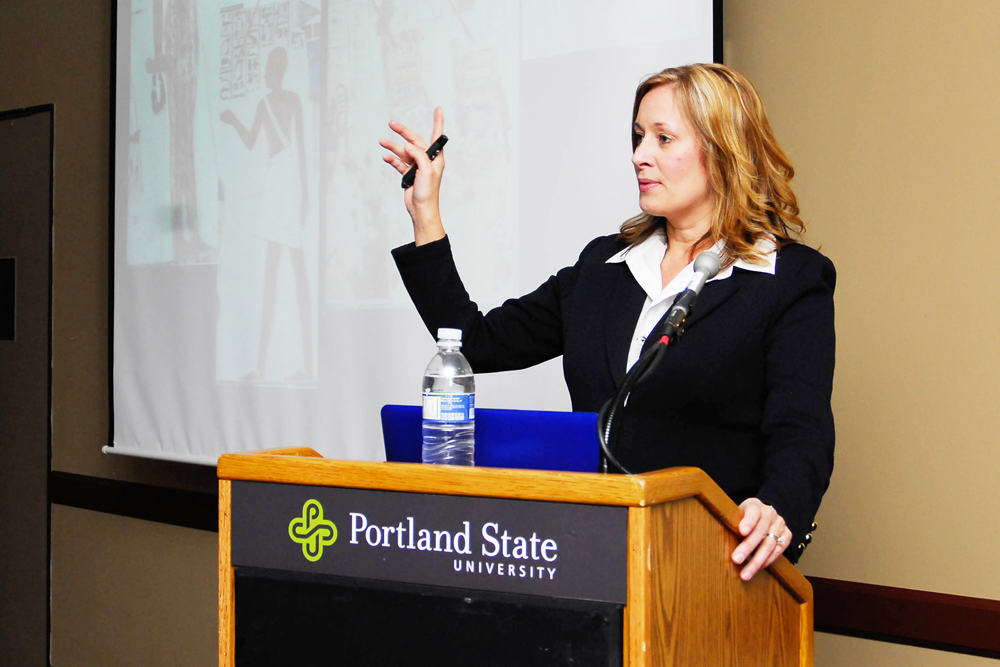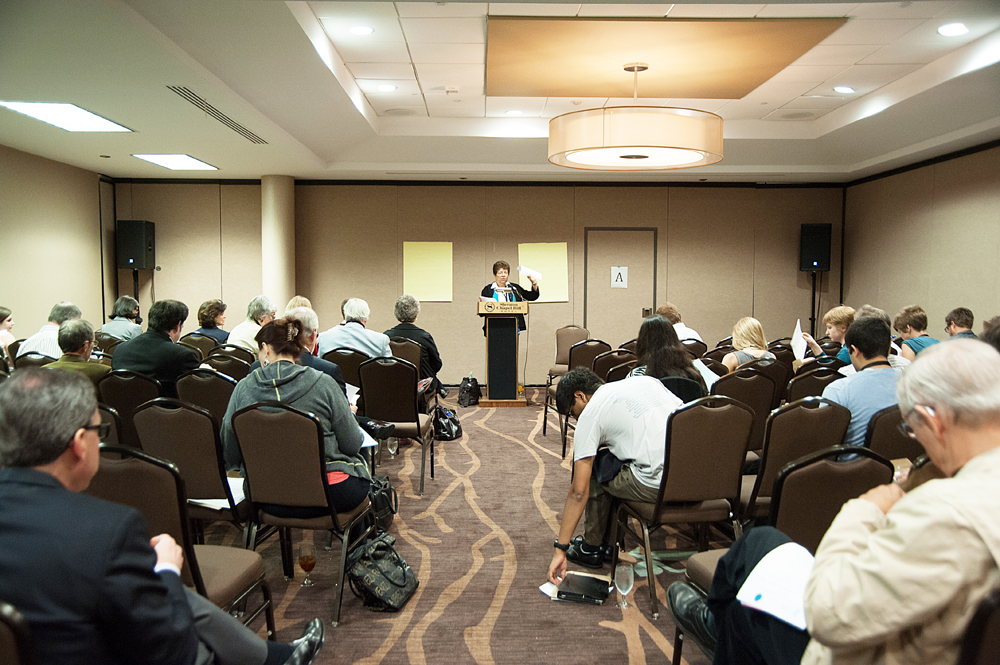“The thing about tombs is that every tomb has a story to tell,” said Dr. Helinda Hartwig, associate professor of art history at Georgia State University. “So I’m going to tell you the story of Menna, what he thought was important about what he wanted to present about himself and how it encapsulated the time that he lived in.”
On the night of Jan. 16, in an event sponsored by the Oregon chapter of the American Research Center in Egypt and Portland State’s Middle East Studies Center, Hartwig discussed a recent endeavor undertaken in the pursuit of preserving the tomb of Menna, which is recognized as one of Egypt’s finest painted tombs.
Menna was the ancient Egyptian artisan who held the revered position of “Scribe of the Fields of the Lord of the Two Lands of Upper and Lower Egypt,” or, in other words, one who documented land ownership. Menna’s tomb is a renowned tourist attraction, which has suffered severe degradation over the years on account of interaction with the public. Hartwig’s project, with assistance from the ARCE, has sought to revitalize and preserve the site on the west bank of the Nile at Luxor.
As well as discussing the restoration project, the discussion covered the processes employed by ancient Egyptian artisans in painting, the importance and inherent difficulties of non-invasive tomb conservation, and the cultural and spiritual significance of the state of Menna’s tomb.
These topics are similarly addressed in a recent book edited by Hartwig and published in association with the ARCE, The Tomb Chapel of Menna: The Art, Culture, and Science of Painting in an Egyptian Tomb. The book is extensively illustrated, detailing the myriad processes involved in Hartwig’s conservation project, as well as essays and commentary regarding the artistic and cultural significance of the many paintings that inhabit Menna’s tomb.
A series of slides served to depict the impressive restorative work Hartwig’s team underwent in their efforts to give the ancient site a much-needed face-lift.
“…[A condition survey] is when you end up recording all of the conservation or preservation issues you see on the wall,” Dr. Hartwig said. “…We photographed the wall and broke it down into what we call 8/3 or 8/4 sections, and we would mark up these sections, which we then in digitized, so that we now have a permanent record of how the wall was before we started doing conservation.”
Despite the negative impact tourism has had on the tomb over the years, there’s an unparalleled sense of history permeating sites such as Menna’s tomb. The experience of interfacing with such an ancient and exotic piece of history in person leaves one with a sense of fulfillment and wonder that is nearly impossible to replicate through other means.
“There’s something about seeing a site that really makes it clear to you what it is that you’re seeing and the value of it,” said Dina Aboul Saad, ARCE’s director of development. “If we want people to appreciate cultures such as Egypt, then seeing it is a major component of that.”
Those interested in further exploring the rich cultural history of ancient Egypt would benefit greatly from attending ARCE’s upcoming annual meeting, which is set to take place right here in Portland.
“Every year the ARCE hosts an annual meeting,” Saad said. “This year it’s going to be through Portland on April 4 through the sixth. This annual meeting is the largest gathering of Egyptologists that come together in the U.S. These are all members of the research center. It’s not just for scholars, but for the general public. It’s a wonderful time for people to come together who are interested in Egypt’s cultural history.”
Full-time students can become full-fledged members of ARCE for a discounted price of $40 and can find more information online at www.arce.org/students. The pre-registration price for student members interested in attending ARCE’s 2014 annual meeting, which will run for three days and includes a dinner reception, is $100.






